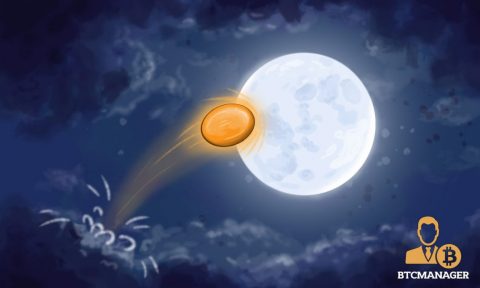Blockchain Lunar Registry ‘Diana’ Intends to Tokenize the Moon

Diana, a project that claims to be a “Blockchain Lunar Registry,” has announced plans to tokenize the Moon and register it on a distributed ledger. Diana says it’s also developing a decentralized application (dApp) that can mark the land on the Moon and make it tradeable by individuals, according to a press release on August 19, 2019.
A Moonshot Proposal
As part of plans to commemorate the 50th anniversary of the Apollo 11 Moon landing, Diana is looking to register the moon on the blockchain and develop a decentralized application that would make it possible for people to purchase and trade parts of the Moon.
As stated in its press release, while the United Nations Treaty classifies the Moon as a common human heritage that can’t be entirely owned by a country or an entity, the excellent resources present on the Moon has however spurred many nations to carry out massive exploration of the Moon, in a bid to have an edge over others.
To encourage forward-thinking citizens to explore the Moon, in 2015, the government of the United States signed the U.S. Commercial Space Launch Competitiveness Act (CSLA) into law, a move that now makes it possible for an individual or a business entity to own a space resource.
Mission Diana
According to Diana, it’s primary objective is to “promote collective registration to secure the possible right of man to the Moon”, proposing a solution to the issue of ‘who owns the Moon,’ with blockchain technology and the Ethereum ERC-20x based DIA token.
Through collective registration, the Diana project seeks to clearly define the possible rights of man to the Moon and eliminate ownership disputes.
The team says anyone can participate in the collective registration of the Moon through its Diana registration system.
Diana claims that “out of roughly 3.87 billion cells generated by dividing the Moon into specific areas (9,790-meter square), 2 billion, on the front side of the Moon visible to the human eye, are available at present.”
Diana says interested participants in its project will be able to select a registration area and assign their own unique addresses to the land.
The press release notes that the owner of a digitized piece of land on the moon can decide to sell it to a third party in real-time, or pass it on to a loved one as an everlasting gift.
Though Diana’s mission appears quite achievable on paper, thanks to the immutability property of the blockchain, it, however, remains to be seen whether the project will be successful.











